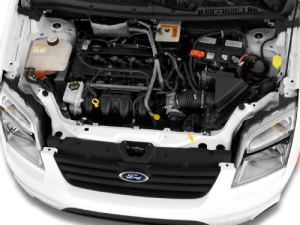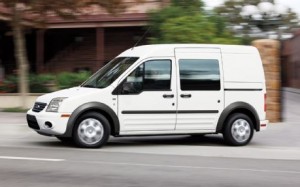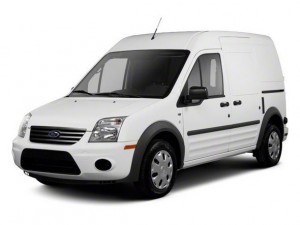

| Visitors Now: | |
| Total Visits: | |
| Total Stories: |

| Story Views | |
| Now: | |
| Last Hour: | |
| Last 24 Hours: | |
| Total: | |
2013 Ford Transit Connect
Automobiles, Motorcycles and Libertarian Politics
 I just finished spending a week in another $40,000 minivan (2013 Toyota Sienna; see here) so it was kind of nice to spend some time in one that cost half as much. And which was half as big.
I just finished spending a week in another $40,000 minivan (2013 Toyota Sienna; see here) so it was kind of nice to spend some time in one that cost half as much. And which was half as big.
You know – like minivans used to be.
Now, Ford doesn’t call the 2013 Transit Connect a minivan. But it sure has more in common with old school minivans than the two ton, seventeen-footers that go by that designation nowadays. And not just in terms of its more modest size, either.
It is also modestly priced – and fairly easy on gas.
Of course, it hasn’t got a DVD widescreen entertainment system – and it won’t get to 60 in 8 seconds or less. But it’s ideally suited to be a low-bucks kid-hauler, which current not-so-mini-vans aren’t.
Its tall roof/large cargo (and available cargo inventory system) also make it an ideal truckster for electricians, plumbers and contractors generally.
Might be worth a look-see if you fall into any of those categories.
The Transit Connect is a kind of Mini-me jitney bus/compact-sized utility van.
Originally built for the European market – where space is tight and fuel expensive – the four cylinder-powered, front wheel drive Transit isn’t much bigger in terms of its exterior footprint than a current compact-sized sedan, but it has a comparatively huge (and tall) box with almost as much total cargo space (135 cubic feet) as a current not-so-minivan. (The much larger 2013 Toyota Sienna I reviewed last week has 150 cubic feet of total cargo space.)
The Transit Connect is available in either cargo or passenger-carrying configurations, with prices starting at $22,265 for the Cargo Van XL (no side or rear glass and just two seats for passenger and driver) and topping out at $24,040 for an XLT Premium with a second row of three-across seats and five-passenger capacity. Ford also offers a CNG (natural gas) ready version, which could be an alternative to a much more costly hybrid.
It’s a unique vehicle that doesn’t have any direct competition in the United States.
WHAT’S NEW FOR 2013
Ford added stability control to the list of standard equipment last year (2012). For 2013, the Transit carries over unchanged – with the exception of a slight across the board uptick in prices (last year’s base price was $22,035) which can be attributed to inflation and the Fed rather than to Ford.
WHAT’S GOOD
XL Cargo versions make for ideal small-business urban-suburban runabout/delivery vehicles.
XLT version could be a budget-priced alternative to a traditional minivan or crossover SUV.
CNG version could be a way to end-run high gas prices.
Cheap to buy – cheap to drive.
Factory broadband Internet access; available high-tech DeWalt electronic tool inventory management system.
Windowless base models have Stevie Wonder rearward visibility that can make the Transit unsettling to drive in heavy traffic if you’re not used to commercial-type vehicles.
UPS truck handling qualities.
Geo Metro acceleration.
Out of date four-speed automatic transmission.
Though the cargo area is capacious, maximum cargo weight is limited to 1,600 lbs.
No towing capacity.
The Transit comes standard with a 2.0 liter, 136 hp engine and four-speed automatic.
All versions are front-wheel-drive.
This layout is very similar to what you’d have found in a mid-late 1980s Dodge Caravan (which came standard with a 2.2 liter, 96 hp engine). This has its good – and bad – points.
The good: decent fuel economy; 21 city, 27 highway. This means you should be able to average low-mid 20s – vs. averaging mid-high teens in a V-6 powered not-so-mini-van. (The Sienna I had last week has a city MPG rating of just 17 – and maxxes out at 23 on the highway.)
Being a four, there are also fewer parts to service (such as spark plugs) as well as less oil, coolant and so on to replace. Plus inherently easier access to the engine. Ask anyone who has changed a transverse four’s spark plugs vs. a transverse V-6′s spark plugs. This should make the Transit cheaper to keep up – and more amenable to DIY keep up, too.
The bad: Zero to 60 takes about 12.4-12.5 seconds, so a Prius hybrid can easily outrun this thing. So can pretty much anything else. A modern minivan (any of them) is at least four seconds quicker to 60. The limited hp under the hood also limits what you can do with the Transit. It can’t, for example, carry a pallet of bricks home from Home Depot – even though the pallet load of bricks would fit inside. Most current not-so-mini-vans can pull at least 1,500 lbs. Several can pull 3,000.
The Transit can’t pull anything.
Also, the Transit’s gas mileage is not what it might be because of the old-school four-speed automatic transmission. There’s nothing wrong with it - it’s just that it’s not as efficient as the five (and six) speed automatics that are commonplace today. With a continuously variable (CVT) transmission, the Transit could probably achieve 30-plus MPG on the highway – and average mid-20s.
The available CNG Engine Prep Package is worth a mention. Order this (it’s cheap, only $315) and you’ll be able to operate on CNG – which is much cheaper on a per-gallon-equivalent basis than gasoline. How much cheaper? About a buck per-gallon-equivalent (see here for more info). CNG prices are also less volatile, in part because the US has tremendous reserves of the stuff. That’s the upside.
The downsides are: The package only includes the ugrades to the engine necessary to operate on CNG such as hardened intake/exhaust valves. You’ll still need to buy the CNG tanks (the main expense) and also have the engine computer reflashed before it’s ready to burn CNG. Also, while CNG is cheap it is also hard to find. You pretty much have to have access to a fleet refueling facility – and even if you do, your driving range will be constrained by the location of the refueling facility.
Check into all of this thoroughly before you check the box for the CNG option.
It takes a few minutes to get used to your environment inside the Transit. The roofline is much taller than even the tallest of the new “cube” vehicles (Scion xB, Kia Soul, Nissan… er, Cube). The roof extends upward from the top of the windshield by eight inches. But this is what makes the five-foot floor to ceiling height – and the Transit’s versatility as a cargo-hauler – possible.
It also gives you outstanding side visibility due to the tall side glass (assuming you order it).
There’s a storage alcove built into the upper bulkhead, above the driver’s head – just like in jitney busses of the type you may have been ferried from a hotel parking lot to an airport terminal in. Behind you (in Cargo versions) is an untrimmed, unadorned all-metal interior; no side or rear windows.
There’s no rearview mirror, either - because, after all, what would be the point?
Wagon versions do get side and rear windows – and you can order them on the lower trim Cargo version for about $200 extra.
Though it is physically a small vehicle (180 inches long and 70.7 inches wide, or just only slighter longer and wider than a Focus sedan – which is considered a compact) the Transit’s height (nearly 80 inches, vs. 58.6 for the Focus) combined with the windowless sides and rear, makes it feel bigger than it really is.
Still, once you get used to it (and learn to use your side mirrors) you find the Transit is very easy to maneuver into tight spots, such as curbside parking in busy downtown areas. It readily slots into places that would be off limits to a standard van, or even a standard-sized not-so-mini-van.
The turning radius is only 39 feet – almost exactly the same as the physically much larger Chrysler Town & Country not-so-mini-van.
Though it’s perhaps the most top-heavy looking vehicle since the Suzuki Samurai, it doesn’t feel unstable (if driven within reason), thanks to its fairly low center of gravity.
Acceleration is postal Jeep-like, but it’s enough to get around – provided you don’t mind not getting there first. Yeah, a 12-13 second 0-60 time is pretty crippled up by modern car standards, but reflect that it’s actually better than most average/v-6 powered family-type cars managed back in the ’80s.
And decent gas mileage is your payoff – though the Transit would be even better with a diesel engine under its hood. A diesel’s torque advantage at low speeds would also make it feel snappier in terms of acceleration – and probably would give 40-plus MPGs, too.
I’d rather have that than the CNG thing.
The Transit looks like a downscaled commercial vehicle, especially models painted washing machine white (like my test vehicle) without the side or rear glass. Your neighbors will think the electrician is doing some work at your place. Or maybe that you’ve opened a new catering business. And that actually might be an issue for people who live in communities with HOAs that prohibit residents from parking “commercial” vehicles outside their homes – or even in their driveways. Though legally speaking it’s not “commercial,” you still may have to wrangle with the HOA Mussolinis.
The interior, though Spartan, is well-designed for its intended purpose. Dual (manual) sliding side doors are standard; you can also access the back by a pair of hinged doors that open outward and almost fold back on themselves (225 degrees) to keep them out of your way and make it easier to load the vehicle.
Two-seater versions have a total of 135 cubic feet of cargo capacity. This is a lot of room for the size. For perspective, the biggest Kahuna of current not-so-minivans, the Toyota Sienna, only has 15 cubic feet more total cargo capacity.
And the Transit’s layout is set up for maximum usability. The 6×4 cargo floor is totally flat – and the depth from the ceiling to the floor is five feet, which means you can walk around back there, just hunched over some. Still, you can roll a motorcycle into this thing, no problem.
Try that in a standard-sized not-so-mini-van.
Do keep in mind the 1,600 lb. max payload rating, though.
There are also some unique features available in the Transit that you can’t get in any other vehicle, such as the factory-installed broadband Internet access/display with wireless keyboard and mouse that lets you check/send e-mails from the vehicle (which must be stationary for the system to work, fyi). There’s also an available DeWalt Tool Link RFID tracking system to inventory your expensive tools. It’s an expensive option, however: $925.
Passenger Wagon versions come with a second row of three-across seats, which are easy to access via either of the two sliding doors. The very low step-in height of the Transit makes getting in and out of the second row easy, even for people with limited mobility.
In fact, the Transit would probably be an ideal candidate for a handicapped conversion. There’s plenty of room for storing a wheelchair in the cargo area and getting in and out requires less stepping up/climbing over obstacles than in a conventional minivan.
If you’re contractor, you could add shelves along the interior sides of the cargo box; dealer installed bulkheads are available, too.
All trims get AC and tilt/telescoping steering wheel included as part of the standard equipment package.
THE REST
Ford did a lot to keep the Transit simple and (hopefully) low bucks to maintain as well as to buy. For example, it comes standard with stamped steel 15 inch wheels with plastic wheelcovers and disc/drum brakes. Accidentally run up over a curb (or hit a deep pothole) and you probably won’t hurt the rugged steel wheels. And if you lose a plastic wheelcover, it’s going to cost a lot less to buy a new one than the fancy trim rings on alloy wheels.
The drum rear brakes will get the job of basic transportation done – and like the steel wheels, they are simple, functional, durable and cheap when they require fixing. Drum brakes don’t have relatively fragile rotors to warp – or expensive calipers that can seize up, Just replace the shoes (typically, $40 or so) every 30,000 miles or thereabouts and usually, you’re all set.
Some reviewers mock the Transit’s four-speed automatic as ancient technology – which it is, given that most new cars come with at least five-speed transmissions and many offer six or even seven speed transmissions. But while the four-speed may not be the most modern – and while it’s true the Transit’s probably a bit less fuel efficient (and not quite as quick-feeling) as it might have been with a five or six-speed – the four-speed keeps the up-front cost of the vehicle down and (probably) this unit will cost you a lot less to rebuild/replace, should that become necessary, than the newer transmissions – which can run $2,500 or more just for a replacement unit – not counting install labor.
For small businessmen, or the Family Guy looking to pare down the cost of owning/operating a vehicle – all this is very appealing.
Plus, no one’s going to bother this thing. You can park on the street without worrying about it.
THE BOTTOM LINE
Cheap is chic again.
The Transit’s not for everyone. But there are people out there who will appreciate this little runabout for what it is – and also for what it isn’t.
Throw it in the Woods?
2012-10-31 21:32:09
Source: http://ericpetersautos.com/2012/10/31/2013-ford-transit-connect/
Source:







